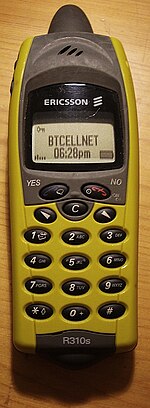
The Global System for Mobile Communications (GSM) is a standard developed by the European Telecommunications Standards Institute (ETSI) to describe the protocols for second-generation (2G) digital cellular networks used by mobile devices such as mobile phones and tablets. GSM is also a trade mark owned by the GSM Association. "GSM" may also refer to the voice codec initially used in GSM.
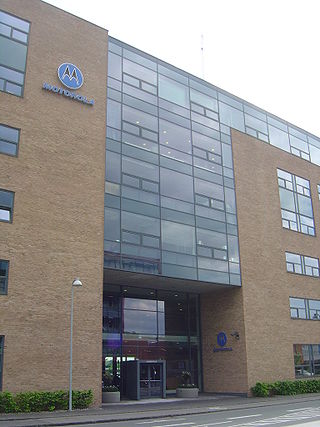
Motorola, Inc. was an American multinational telecommunications company based in Schaumburg, Illinois. It was founded in 1928 as Galvin Manufacturing Corporation by brothers Paul and Joseph Galvin. The company changed its name to Motorola in 1947. After having lost $4.3 billion from 2007 to 2009, Motorola was split into two independent public companies, Motorola Mobility and Motorola Solutions, on January 4, 2011. The reorganization was structured with Motorola Solutions legally succeeding Motorola, Inc., and Motorola Mobility being spun off.

NTT DoCoMo's i-mode is a mobile internet service popular in Japan. Unlike Wireless Application Protocols, i-mode encompasses a wider variety of internet standards, including web access, e-mail, and the packet-switched network that delivers the data. i-mode users also have access to other various services such as: sports results, weather forecasts, games, financial services, and ticket booking. Content is provided by specialised services, typically from the mobile carrier, which allows them to have tighter control over billing.
Sony Mobile Communications Inc. was a multinational telecommunications company founded on October 1, 2001, as a joint venture between Sony Corporation and Ericsson. It was originally incorporated as Sony Ericsson Mobile Communications, and headquartered in London, England, until Sony acquired Ericsson's share in the venture on February 16, 2012. On April 1, 2021, Sony integrated its electronics businesses including Sony Mobile into one company called Sony Corporation.

4G is the fourth generation of cellular network technology, succeeding 3G and designed to support all-IP communications and broadband services, enabling a variety of data-intensive applications. A 4G system must meet the performance requirements defined by the International Telecommunication Union (ITU) in IMT Advanced. 4G supports a range of applications, including enhanced mobile internet access, high-definition streaming, IP telephony, video conferencing, and the expansion of Internet of Things (IoT) applications.
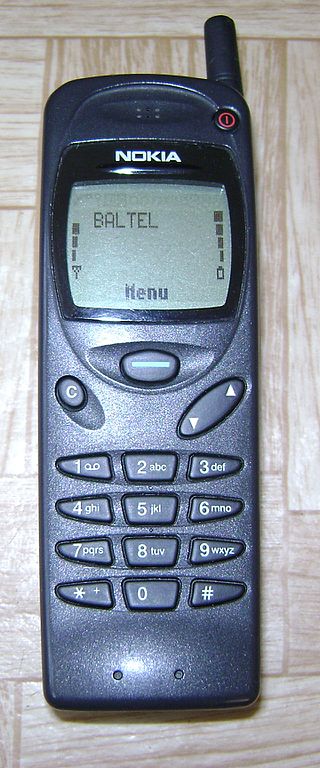
The 3110 is a GSM mobile phone handset manufactured by Nokia in Hungary, introduced at CEBIT in March 1997. The 3110 is notable as the first Nokia handset to feature the 'Navi-Key' menu navigation system. The Navi-Key was featured heavily on Nokia handsets, especially the entry-level models such as the Nokia 1100 in the following years. Unlike its successor, the 3210, and subsequent handsets of similar design, the 3110 had an external antenna. The phone was available with a slim, standard or vibrating battery. It could only be used on a GSM-900 network.
The Nokia 3210 is a GSM cellular phone, announced by Nokia on 18 March 1999.
Thuraya is a United Arab Emirates-based regional mobile-satellite service (MSS) provider. The company operates two geosynchronous satellites and provides telecommunications coverage in more than 161 countries in Europe, the Middle East, North, Central and East Africa, Asia and Australia. Thuraya's L-band network delivers voice and data services.
ACeS was a regional satellite telecommunications company based in Jakarta, Indonesia. It offered GSM-like satellite telephony services to Asian market. The coverage area included Indonesia, Malaysia, Thailand, Philippines, Sri Lanka, Vietnam, China and India. The company operated the Garuda 1 satellite, launched on February 12, 2000. A second satellite was planned but never materialized. ACeS was formed by a joint venture of PT. Pasifik Satelit Nusantara (PSN), Lockheed Martin Global Telecommunication (LMGT), Jasmine International Overseas Ltd of Thailand and Philippine Long Distance Telephone Co. (PLDT). ACeS services were marketed by National Service Providers (NSPs) in six countries; PT. Pasifik Satelit Nusantara in Indonesia, ACeS Regional Services in Thailand, Smart ACeS in the Philippines, TMTouch/Celcom in Malaysia, AVCO in Nepal and Mobitel in Sri Lanka.

Ericsson Mobile Platforms AB (EMP) was the name of a company within the Ericsson group that supplied mobile platforms, i.e. the technological basis on which a cellular phone product can be built. The main office was in Lund, Sweden.
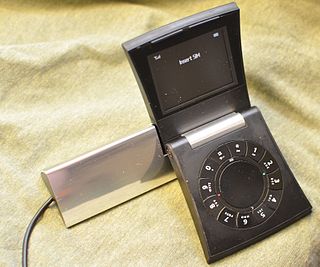
Serene is a mobile phone produced as a joint venture between Samsung Electronics and Bang & Olufsen. It was released in the last quarter of 2005 in Europe. It was available in select stores throughout the world and cost $1275 (~€1000).

Martin Cooper is an American engineer. He is a pioneer in the wireless communications industry, especially in radio spectrum management, with eleven patents in the field.

Wi-Fi calling, also called VoWiFi, refers to mobile phone voice calls and data that are made over IP networks using Wi-Fi, instead of the cell towers provided by cellular networks. Using this feature, compatible handsets are able to route regular cellular calls through a wireless LAN (Wi-Fi) network with broadband Internet, while seamlessly changing connections between the two where necessary. This feature makes use of the Generic Access Network (GAN) protocol, also known as Unlicensed Mobile Access (UMA).

Wireless Application Protocol (WAP) is an obsolete technical standard for accessing information over a mobile cellular network. Introduced in 1999, WAP allowed users with compatible mobile devices to browse content such as news, weather and sports scores provided by mobile network operators, specially designed for the limited capabilities of a mobile device. The Japanese i-mode system offered a competing wireless data standard.

The Nokia 2110 is a cellular phone made by the Finnish telecommunications firm Nokia, first announced and released in January 1994. It is the first Nokia phone with the famous Nokia tune ringtone. The phone can send and receive SMS messages; and lists ten dialed calls, ten received calls and ten missed calls. At the time of the phone's release, it was smaller than others of its price and had a bigger display, so it became very popular. It also features a "revolutionary" new user interface featuring with two dynamic softkeys, which would later lead to the development of the Navi-key on its successor, the Nokia 6110, as well as the Series 20 interface.
Samsung Mobile Division is one of the five divisions within Samsung Electronics, belonging to the Samsung Group, and consists of the Mobile Communications Division, Telecommunication Systems Division, Computer Division, MP3 Business Team, Mobile Solution Centre, and Telecommunication R&D Centre. Telecommunication Business produces a full spectrum of products from mobiles and other mobile devices such as MP3 players and laptop computers to telecommunication network infrastructure. The headquarters is located in Suwon, South Korea.

In telecommunications, long-term evolution (LTE) is a standard for wireless broadband communication for mobile devices and data terminals, based on the GSM/EDGE and UMTS/HSPA standards. It improves on those standards' capacity and speed by using a different radio interface and core network improvements. LTE is the upgrade path for carriers with both GSM/UMTS networks and CDMA2000 networks. Because LTE frequencies and bands differ from country to country, only multi-band phones can use LTE in all countries where it is supported.

Ericsson Mobile Communications AB was a subsidiary of Ericsson, entirely focused on development of mobile phones (handsets), which has been fully acquired by Sony Corp. in 2011. This concluded tumultuous and unhappy venture between the two electronic giants The major offices were located in Lund, Kumla, Raleigh, North Carolina and Lynchburg, Virginia.
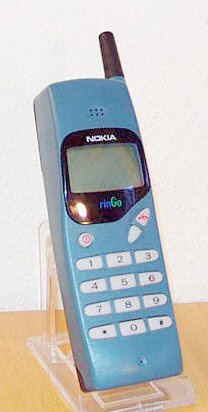
The Nokia rinGo is an entry-level analogue consumer mobile phone from Nokia, originally released for the analogue NMT-900 network in Finland, Norway, Sweden, Denmark and Netherlands. It was also sold in Thailand under the name Wave900. Three revisions were released afterwards.
